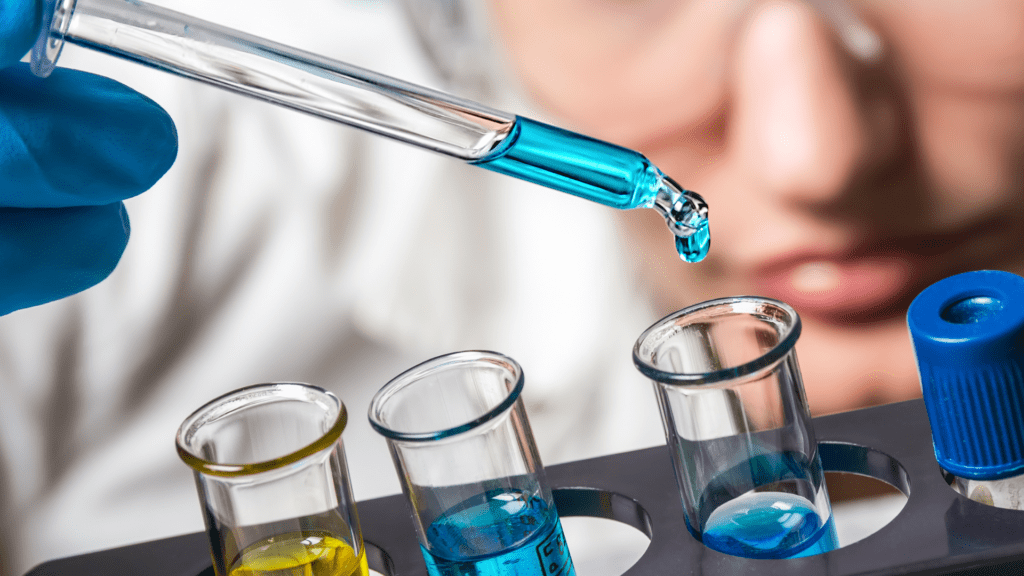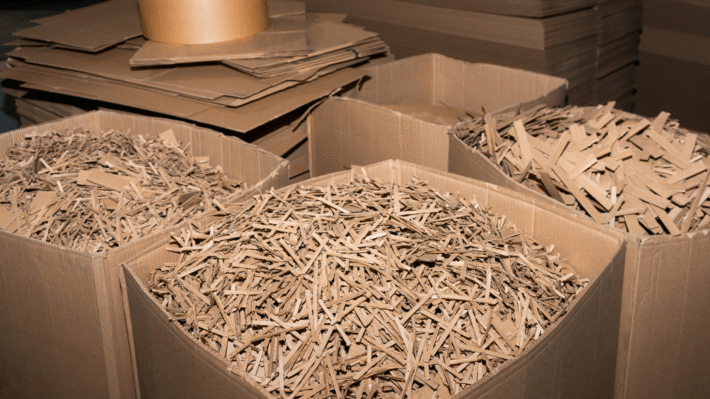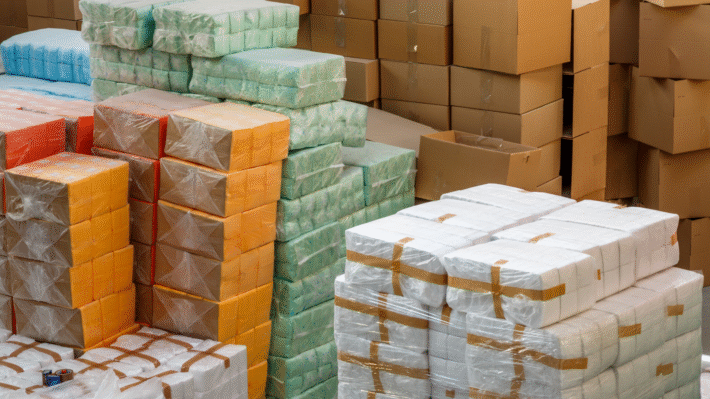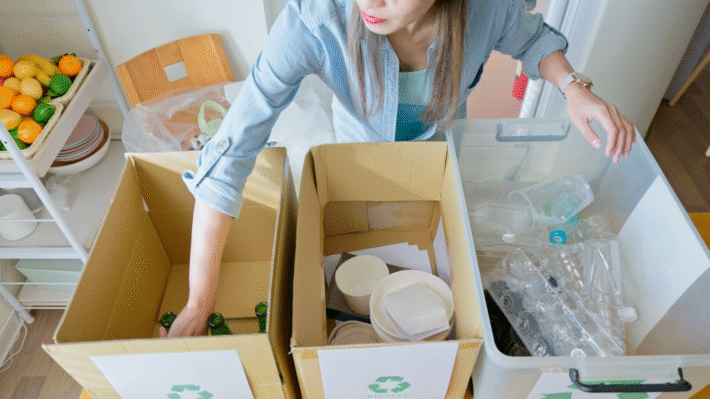Embrace Non-Toxic Alternatives to Foster Circularity in Green Chemistry

Green chemistry is like a superhero for the planet, swooping in to promote sustainability and non-toxic designs. With the world waking up to the urgent need to reduce waste, the concept of circularity is getting a bright spotlight. This marvelous idea is all about reusing, remanufacturing, and recycling to minimize waste. Imagine a world where everything we use is part of a never-ending loop, reducing toxic substances and giving a boost to biodegradable alternatives.
The demand is growing fast to reduce harmful chemicals and embrace biodegradable materials. From bioplastics to non-toxic surfactants, the quest is on to find solutions that don’t just work—they work sustainably. The journey into green chemistry is fascinating, filled with innovative ideas and technologies that promise a healthier future. So, how do we make that dream a reality? Let’s dive in and discover how these amazing changes are already beginning to happen!
Understanding Circularity in Green Chemistry
Let’s dive into the world of circularity and see how it helps make things greener. Green chemistry is about making things non-toxic and sustainable. But to get there, understanding circularity is key.
Challenges of Linear Models
In a linear model, we use things once and throw them away. This causes all sorts of problems.
Waste and Pollution Issues
A big problem is waste. Dumping trash into the environment makes pollution that hurts both people and nature. It’s like having a party and then leaving all the garbage behind. No one likes that, right?
Resource Depletion
We also have the problem of resource depletion. Imagine if you were using up all your crayons and there were no more left to buy. That’s what’s happening with many natural resources because we use them without thinking about tomorrow.
Framework for Circularity
Now let’s talk about how we can make things better with a circular framework.
Closed-Loop Systems
A closed-loop system is like recycling. Instead of throwing things away, we find ways to use them again and again. Imagine if you could keep using the same old ball instead of buying new ones every time it got a bit dirty.
Sustainable Sourcing and Recovery
This involves getting materials in a way that doesn’t harm the planet. It’s about finding or making things sustainably and then recovering them so they can be used again. Like finding a way to turn an old worn-out shirt into something new you can wear.
Benefits of Circular Methods
Let’s see what’s great about these circular methods.
Waste Reduction
Circular methods help us reduce waste. We can keep our environment clean and nice by using things more than once. This means less pollution and fewer dumps.
Resource Efficiency and Lower Footprint
With circular methods, we use resources more efficiently. It’s like making sure you get to eat every last bit of your cake without wasting any crumbs. Plus, it lowers our footprint on Earth, which means we’re being kinder to the planet.
This is why understanding circularity in green chemistry holds such importance. It not only helps the environment but also makes sure that resources are used wisely for a sustainable future.
Advancing Non-Toxic, Biodegradable Alternatives
Imagine a world where our trash doesn’t hurt the planet. That’s what “biodegradable” means, folks! It’s something that can break down and become part of the earth again. We are advancing towards using things that don’t stick around forever and mess up our nature.
Role of Biodegradables
Examples like Bioplastics and Polymers
Biodegradables come in many forms. Ever heard of bioplastics? These are like regular plastic but made from plants. Yes, corn can become plastic! Polymers are fancy words for things that can stretch and bend without snapping. We can make them from nature-friendly stuff, too, not just oil.
Benefits for Environment
When we use biodegradables, the earth gets a big gift. Less trash means less mess. The soil stays healthy, water stays clean, and the air is fresh. That’s nice, right? By choosing biodegradable items, we are giving the planet a big bear hug.
Non-Toxic Approaches
Green Solvents and Catalysts
Now, let’s talk non-toxic. This means using chemistry that doesn’t poison plants, animals, or us. Green solvents and catalysts are like the heroes in chemical reactions. They help things mix without leaving behind icky and dangerous stuff. It’s like baking cookies without making a mess in your kitchen.
Application in Various Sectors
We can use these non-toxic tricks in many places. Think of farms, clothes, plastic bottles, or shampoos. Farmers can grow crops without harmful sprays. Clothes can be dyed without nasty chemicals. Even shampoo can keep us clean without hurting our lakes and rivers.
In short, advancing non-toxic, biodegradable alternatives is about creating things that help, not harm. It’s like holding hands with nature and walking in a happy partnership!
Incorporating Technological Innovations
In the world of green chemistry, making things cleaner and safer is super important. New technological innovations help make this happen. Let’s find out how they work.
Green Synthesis Techniques
Green synthesis techniques are like clever ways to make things using fewer bad stuff. They help make products that don’t harm nature. Let’s see two key parts of this.
Use of Renewable Feedstocks
Use of renewable feedstocks means using natural materials that can grow again and again, like plants. These materials are kinder to the planet. Using them means we don’t run out of important stuff, and it keeps the earth healthy. It’s like using a garden instead of a garbage dump to get what we need.
Efficient Resource Usage
Efficient resource usage means using less energy and materials to make products. It’s like doing homework with fewer pencils but still getting good grades! This helps save energy and reduces waste. It also means more resources are saved for future use. It’s smart and simple.
Nanotechnology and Biocatalysis
Nanotechnology and biocatalysis are big words but think about tiny things making a big difference. This is like using a tiny toolkit to fix big problems.
Enhanced Performance
Enhanced performance means making products work better without using harmful chemicals. With nanotechnology, tiny particles can make materials stronger or more flexible. This is like wearing a super-strong yet light jacket in cold weather.
Sustainability through Enzymes
Sustainability through enzymes uses natural helpers called enzymes. They help to speed up reactions without the need for dangerous chemicals. Enzymes are like little helpers that make baking cookies faster without burning them! They are always reusable and safe, making the process much more sustainable.
With technological innovations like these, we can make products that are safe for us and our planet. This is what green chemistry is all about, and it’s the way forward for a healthier world.
Integrating Supply Chain for Green Chemistry
Building a smart supply chain is vital for green chemistry. The goal is to make the chain circular. This means using what’s already been made before making more. By doing this, we can cut down on waste and protect the Earth better.
Building Collaborative Networks
Networks are like friendships. They help things flow smoothly. Here, different people work together. They include builders, scientists, and others all having a common goal: making things greener.
Manufacturers and R&D Involvement
Manufacturers are the ones who make stuff. But they don’t do it alone. They need R&D teams, which are smart folks who think up new ideas. By teaming up, they can make safer things that don’t hurt nature.
This teamwork can lead to products that last longer and can be used again. Plus, they can find out new ways to reduce harm to our home, the Earth. It’s like a big puzzle and everyone has a piece to solve it.
Sustainable and Ethical Practices
Practicing what’s sustainable means doing things that can last. You can keep doing them without running out of stuff. Ethical practices are about doing the right thing, like not hurting people or nature.
- Using materials that grow back fast, like plants.
- Making sure factories are careful with energy and water.
- Treating workers fairly.
All these steps help keep the planet and the people happy.
Challenges in Integration
Getting everyone to work together sounds easy, but it’s quite tricky. There are bumps along the way. These bumps make things harder, but they aren’t impossible to get over.
Economic and Market Challenges
Money is often a big worry. Green choices can cost more at first. But smart money folks know that if you invest in green, you save money in the long run. This is because you spend less on waste and pollution.
Markets are where people buy and sell things. They need to see green as good. We need to show that green things are also good for business and not just extra costs.
Technological Barriers and Scalability
Technology is the tools and know-how we use. Sometimes, the tools we have aren’t enough for green ideas. We need better tools that can grow with new demands.
Scalability means making enough for everyone. If you can’t make a lot of it, it doesn’t help much. We need to find ways to produce green products in big amounts so everybody can have them.
By tackling these challenges, the chain can be more like a circle, where nothing gets wasted, and everything is valued. Green chemistry in the supply chain isn’t just about science—it’s about working together for a better future.
Strategic Approaches and Future Outlook
Let’s see how clever thinking can save our Earth! We want to use green chemistry to make things better. It means using safe stuff so we don’t hurt the planet.
Strategies for Advancement
Thinking big and being creative is key. We must focus on design and business models to make everything work well.
Design and Business Models
Imagine making things last longer and not making a mess. That’s what smart design is about. It means designing things to use over and over. We call it a “closed-loop” system. When a toy breaks, it can be fixed or turned into something else. Businesses can help by making things that don’t harm the Earth. By picking up these smart designs, we make sure nothing gets wasted.
- Closed-loop designs: Products are created in ways they can be reused or fixed.
- Service-based systems: Instead of buying, people can lease or rent. This means less stuff gets thrown away.
Collaboration and Education Initiatives
Working together is like teamwork in a game. It makes things go smoothly. Schools and companies can teach folks about how cool and important green chemistry is. Learning more means doing better!
- Community Involvement: Companies and schools can hold fun events showing why using safe chemicals is the smart choice.
- Awareness Campaigns: Easy and fun ways to learn about how everyone’s actions can make a big difference.
Vision for the Future
Our dreams for the future include smart tools like AI, and rules that everyone follows.
Trends in AI and Machine Learning
These tools are like super-smart robots. AI can help plan better ways to make and use stuff. They help save time and energy, making everything run smoother. It’s like having a brainy buddy guiding us on the best road!
- Optimizing Production: AI helps find the best ways to work, so we use less and make more.
- Predicting Needs: AI can learn and tell us what’s needed before it even happens.
Global Standards and Incentives
Imagine a world where everyone speaks the same language. Global standards mean countries work together using the same safe rules. Companies doing good things get little rewards. It’s a big win for the Earth!
- Universal Rules: Everyone plays by the same safe rules for a cleaner planet.
- Reward Systems: Incentives, like bonuses, for businesses that help save nature.
The future looks bright with these strategic approaches and by dreaming big, we work toward a safe and happy planet. Let’s take these steps together, making every choice count for our Earth!



